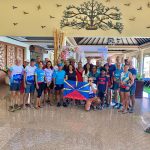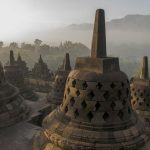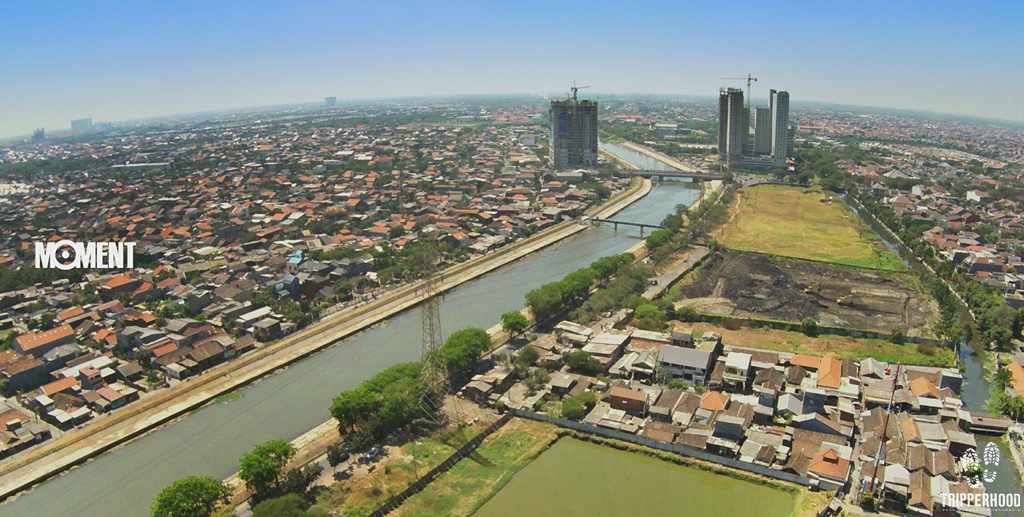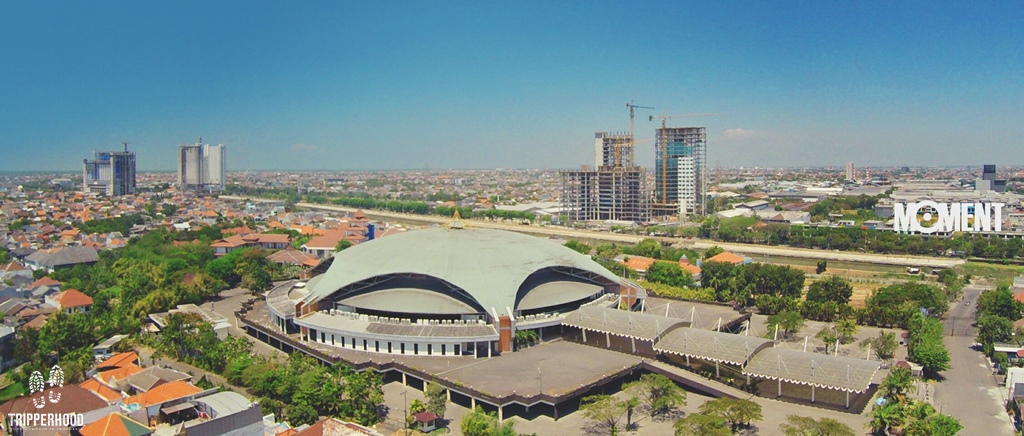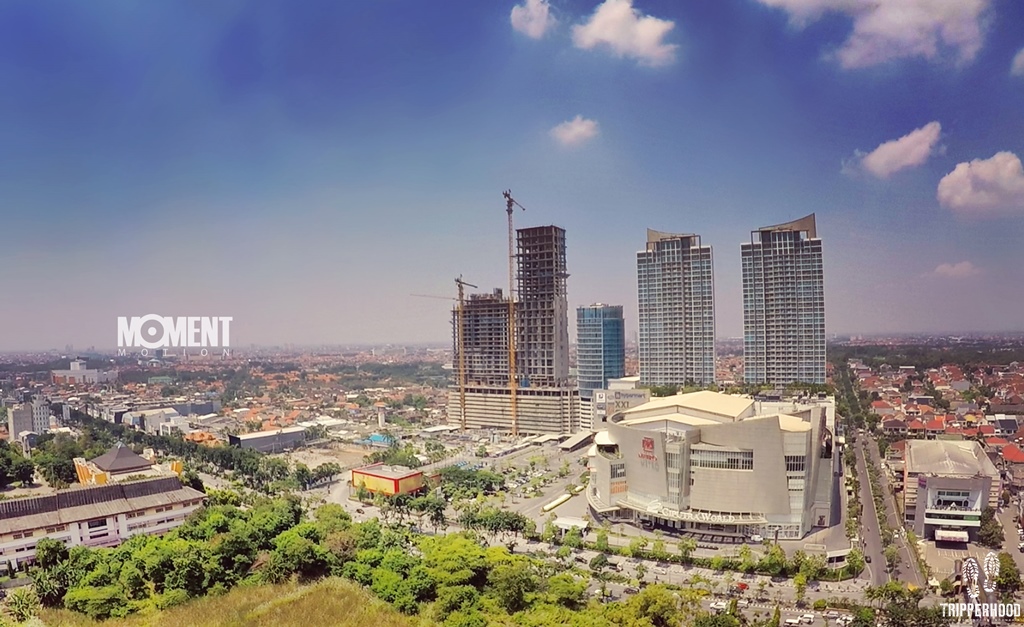GENERAL INFORMATION
Surabaya (formerly Dutch: Soerabaja, Javanese: Suroboyo) is the capital of Jawa Timur (East Java) and the second-largest-city in Indonesia. Located on northeastern Java island and along the edge of the Madura Strait. The city is known as Kota Pahlawan “city of heroes” due to the importance of the Battle of Surabaya in galvanizing Indonesian and international support for Indonesian independence during the Indonesian National Revolution. Surabaya was once the largest city in Dutch East Indies and virtually the center of trading in the nation, exceeding those of Batavia, competing with the likes of Singapore and Hong Kong.
Surabaya (Suroboyo) is locally believed to derive its name from the words “suro” (shark) and “boyo” (crocodile), two creatures which, in a local myth, fought each other in order to gain the title of “the strongest and most powerful animal” in the area.
Surabaya is a trading center of Majapahit, Singhosari and Kediri Kingdom. Nowadays Surabaya becomes a modern industrial city, economic and trading center in East Java, as well as home to the Navy. As a metropolitan city, Surabaya becomes the center of economic activities in East Java and the surrounding area. Most of the population is engaged in services, industry and trade. Many large companies are headquartered in Surabaya.
BEST TIME TO VISIT
All Year Round
HOW TO REACH
By plane: Surabaya has 2 big airport named Juanda Terminal 1 and Juanda Terminal 2. Terminal 1 serves domestic flights and airlines. While Terminal 2 serves international flights and international airlines like Garuda and Air Asia. Both airport are not side by side, so make sure which airport you are arriving/departing.
By train: Surabaya has 3 station serving different routes. Main train station is Pasar Turi station, and the other 2 are Gubeng and Surabaya Kota. Those 3 station serves all destination to smaller cities in Java.
By bus: The main bus station is Terminal Purabaya, serving all destinations in most cities.
DESTINATIONS
- Museum Bank Indonesia is a bank museum occupying the former De Javasche Bank built in 1904.
- Al-Akbar Mosque is a magnificent and modern mosque, and is the second largest mosque after the Istiqlal Mosque in Jakarta. The mosque has two floors and is equipped with an elevator and tower. The visitors who come to the mosque can also enjoy views of the city of Surabaya, Sidoarjo and Bangkalan from the top of the tower with 99 meters high.
- Four Face Buddha statue, this statue has size 9 × 9 meters, and includes a dome that reaches 36 meters looks magnificent because the material for statue is using pure gold coating that is directly imported from Thailand.
- Cheng Ho Mosque has an oriental architecture with a touch of art, which symbolize the acculturation Chinese, Javanese and Islam. Acculturation is poured into a mixture of green color, turning to yellow and red. Cheng Ho Mosque name taken from the name of Admiral Cheng Ho, an Admiral of China and became a Muslim during the entrance to Majapahit. Cheng Ho Mosque was inspired by Niu Jei Mosque in Beijing, China.
- Adhyatma Health Museum displays some historic medical equipment since the beginning of time to the present time. This collection also includes all the historical objects in the health services of the various regions, race / ethnicity, religion / belief, etc.
- Rumah Batik Jawa Timur, house of Batik have a variety of batik collections from 16 districts that have diverse and distinctive style in each region. The 16 District include Batik Sumenep, Pamekasan, Sampang, Bangkalan, Surabaya, Sidoarjo, Lamongan, Tuban, Pasuruan, Malang, Batu, Jombang, Kediri, Pacitan, Banyuwangi, Jember, Tulungagung. This place also provides a short batik lesson you can take home.
- House of sampoerna, this building was previously used as an orphanage run by the Dutch, then purchased in 1932 by Lim Seeng Tee, founder of Sampoerna, with the intent to use a first Sampoerna cigarette production. HOS tells the story of the founding family of Sampoerna, to closely watch the cigarette rolling process.
- Kepanjen Katholik Church / Gothic Church, the Catholic Church of the Nativity of the Blessed Virgin Mary is the oldest church in Surabaya. Built by Philip Wedding from Netherlands who was sailing to Surabaya to spread Catholic. With increasing days, the church member keeps growing, so he decided to built the Kepanjen Church.
- PTPN Building is an extension of the PT. Perkebunan Nusantara, one of the state-owned companies involving business in sugar cane plantations, which produce sugar and molasses as the main product in the form of alcohol and spirits. This building is one of the biggest buildings in Surabaya in his time, which spent 3,000 m3 of concrete in its construction and still firmly preserved until today.
- Kapal Selam Monument, a submarine KRI Pasopati 410, one of the Indonesian Navy fleet made by the Soviet Union in 1952. The submarine was once involved in the Battle of Aru ocean to free West Papua from the Dutch occupation. The submarine has a length of 76.6 meters and a width of 6.30 meters and is equipped with torpedoes steam gas amounted to 12 pieces.
- Sunan Ampel Mosque in Arab Town, one of the oldest mosques and the most crowded mosque in Surabaya, Ampel Mosque has a certain relationship with the ‘Sunan Ampel’, which is one of the ‘Wali Songo’ which plays an important role in spreading Islam in Java. Like the Arab Town, this area has much visited for those who want to buy something for Ramadan or Islamic stuff like, prayer beads, prayer rugs, mukenah, hoods etc. In addition, Arab Town has a variety of menu choices for Arab or Indian cuisine.
- Heroes Monument was built to honor the soldiers who died during the Surabaya great battle against the allied forces were paralyzed by NICA, and who wants to occupy Surabaya on November 10, 1945. The hero monument is located in front of the governor. Built in the shape of inverted spikes with a height of 40.45 meters. Below the monument is decorated with carvings” Trident “pictorial, ” Chakra ‘,’ ‘Stamba” and’ “Padma” as a symbol of the fire fight. Inside this monument, is the 10 November Museum. Ten November Museum constructed to clarify the existence of Tugu Pahlawan and as perverts the historical evidence on 10 November 1945.
- Suramadu Bridge is the longest bridge in Indonesia, with 5.438 meters long. This bridge, that connecting Surabaya and Madura island, was built within six years and cost about 4,5 trillion rupiah.
TEMPERATURE
Surabaya features a tropical wet and dry climate, with distinct wet and dry seasons. The city’s wet season runs from November through June, while the dry season covers the remaining five months. Unlike a number of cities and regions with a tropical wet and dry climate, average high and low temperatures are very consistent throughout the course of the year, with an average high temperature of around 31 degrees Celsius and average low temperatures of around 26 degrees Celsius.
CULINARY
Here are some of Surabaya best culinary :
Rujak Cingur, a marinated cow snout or lips and noses (cingur), served with boiled vegetables and shrimp crackers. It is then dressed in a sauce made of caramelized fermented shrimp paste (petis), peanuts, chili, and spices. It is usually served with lontong, a boiled rice cake. Rujak Cingur is considered traditional food of Surabaya in East Java.
Rawon, a dark beef soup, served with mung bean sprouts and the ubiquitous sambal. The dark (almost black) color comes from the kluwak (Pangium edule) nuts.
Lontong balap, literally means “racing rice cake”, which is a dish of rice cakes, fried tofu, and beansprouts, doused in kecap manis and sambal sauce. In the past, lontong balap hawkers carried their wares in a large, heavy metal urn. The heaviness caused them to have to walk really quickly while carrying it, so they looked like they were “racing”.
Tahu tek, a dish containing cut-up fried tofu, boiled vegetables (mostly beansprouts), potatoes, drenched in a peanut-based sauce. The sauce has caramelized fermented shrimp pasted (petis), chili, and garlic.
Tahu campur, a beef and offal soup, mixed with fresh vegetables, potatoes, rice cake, and tofu. The secret ingredient is the caramelized fermented shrimp paste (petis) which is mixed in just before serving.
Semanggi, a salad made of boiled semanggi (M. crenata) leaves that grow in paddy fields. It is dressed in a spicy peanut sauce.
ATTENTION REQUIRED
Positive attitude all the time
Comfortable clothes
Bring your camera and all of the gears
Prepare your tummy for culinary trip
For you who love historical and culture trip, come to Surabaya. We’ll take you to explore many historical places and combine it with culinary trip.
Surabaya is also a home for Tripperhood and most of our tours starts here.
You are always welcome to come by and say hello.

